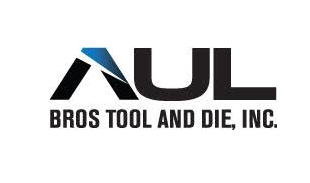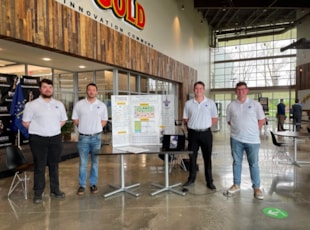Purdue Data Mine Team Works with Mursix on Real-World Supply Chain Issues
A group of students at Purdue University recently analyzed supply chain issues at Mursix Corporation as part of a comprehensive, year-long program, offering recommendations for how the company can improve overall service to customers.
The Data Mine group at Purdue, a large-scale learning community consisting of both undergraduate and graduate students, works to advance data science through collaboration, learning, research, innovation, and entrepreneurship. This year, several of The Data Mine students working with Mursix are simultaneously pursuing the M.S. in Business Analytics and Information Management, offered by the Krannert School of Management at Purdue.
“We chose to work with the Purdue Data Mine because of their strong reputation of collaboration and partnership in industry,” said Susan Murray Carlock, vice president of business development. “We were looking for a partner that we could work with to help problem solve and assist in our continual improvement, while also providing a real-world learning experience that will help bolster the future of Indiana’s manufacturing workforce.”
The team’s initial strategy was to analyze the Mursix delivery process and gauge how to best reduce late-part deliveries caused by the pandemic, with a goal of reducing the overall lead time to customers. They found that by investing in software solutions that automatically monitor and report on machine activity, rather than manually enter information, the company could not only save time, but would also have access to more accurate data.
The students also concluded that inventory was being left on shelves leading to high storage costs for Mursix. The recommended solution was to implement an inventory management system that strictly enforces first in, first out (FIFO), and to improve forecasting by increasing the frequency and accuracy of inventory information to account for reduction in demand.
The conclusion of this semester’s project, and general recommendations that followed, included:
- Visual Management, including a progress calendar, shadows/outlines, visual dashboards, and a color-coding system.
- The 5S Pillars of Lean, Sort, Set in Order, Shine, Standardize, and Sustain, which provide a methodology for organizing, cleaning, developing, and sustaining a productive work environment.
- Error Proofing, or mistake proofing, which encompasses the use of any automatic device or method that either makes it impossible for an error to occur or makes the error immediately obvious once it has occurred.
- Finally, Continuous Improvement is the mindset that good processes create good results. These are improvements based on small changes and they empower the employees. They must be measurable, standardized, and repeatable.
Using the insights gained from the first semester, and the solid foundation Mursix had already built, the Purdue Data Mine team plans to continue working to strengthen domestic supply chains with Mursix during the spring semester. They plan to take different approaches to continue the analysis by building predictive and optimization models related to manufacturing, shipping, and supplier information. Murry Carlock states that Mursix will, “continue the relationship into the next academic year to expand upon the project taking an even deeper dive. This collaboration feeds into our Zero-Defect Initiative and ensures our customers are getting the best quality product delivered right on time.”


